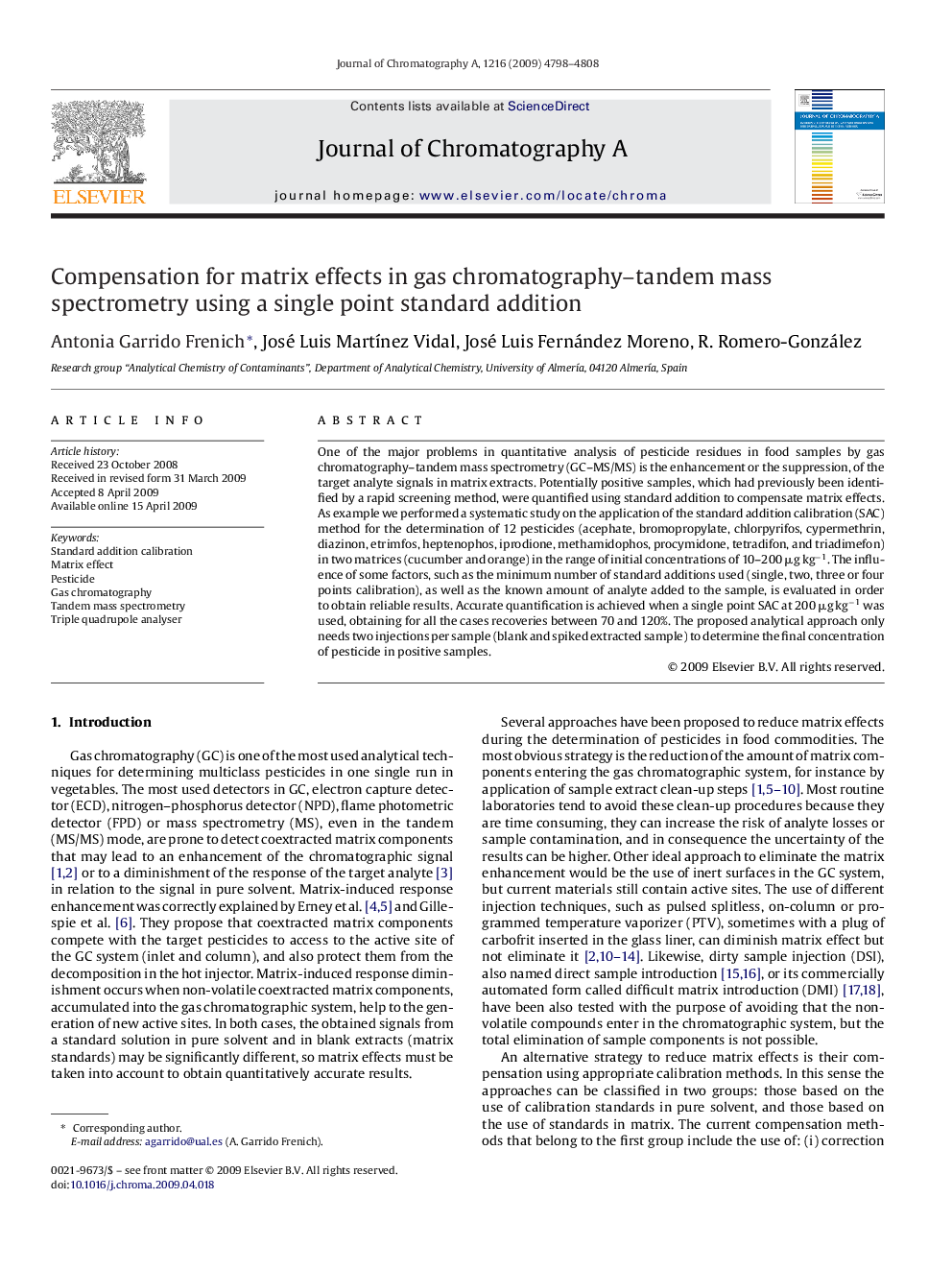| Article ID | Journal | Published Year | Pages | File Type |
|---|---|---|---|---|
| 1206202 | Journal of Chromatography A | 2009 | 11 Pages |
One of the major problems in quantitative analysis of pesticide residues in food samples by gas chromatography–tandem mass spectrometry (GC–MS/MS) is the enhancement or the suppression, of the target analyte signals in matrix extracts. Potentially positive samples, which had previously been identified by a rapid screening method, were quantified using standard addition to compensate matrix effects. As example we performed a systematic study on the application of the standard addition calibration (SAC) method for the determination of 12 pesticides (acephate, bromopropylate, chlorpyrifos, cypermethrin, diazinon, etrimfos, heptenophos, iprodione, methamidophos, procymidone, tetradifon, and triadimefon) in two matrices (cucumber and orange) in the range of initial concentrations of 10–200 μg kg−1. The influence of some factors, such as the minimum number of standard additions used (single, two, three or four points calibration), as well as the known amount of analyte added to the sample, is evaluated in order to obtain reliable results. Accurate quantification is achieved when a single point SAC at 200 μg kg−1 was used, obtaining for all the cases recoveries between 70 and 120%. The proposed analytical approach only needs two injections per sample (blank and spiked extracted sample) to determine the final concentration of pesticide in positive samples.
